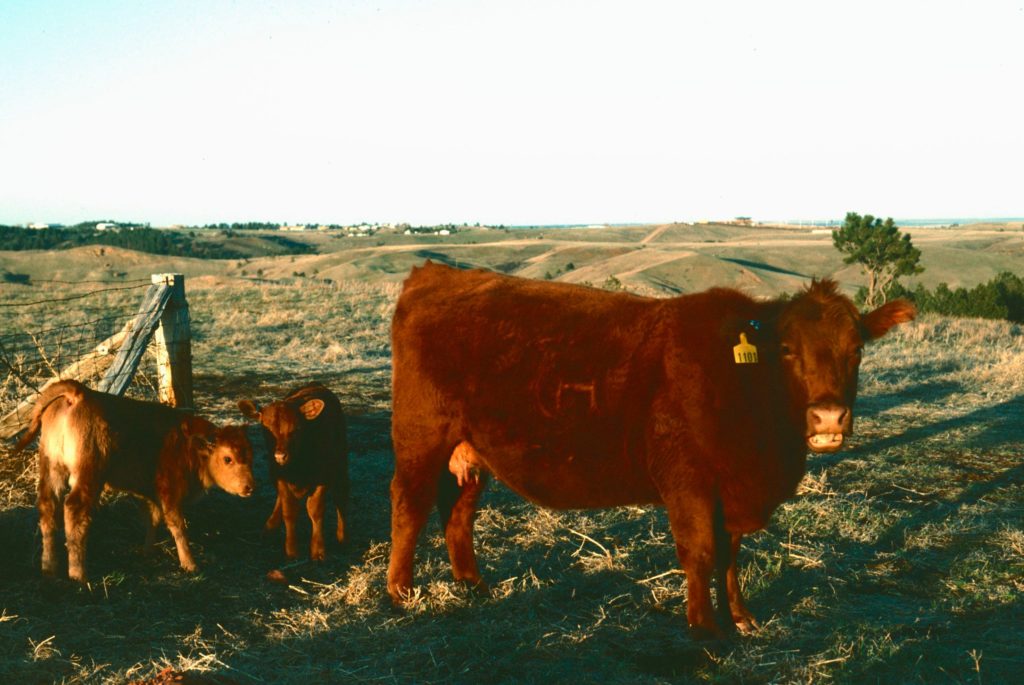Do you like a good steak? Coyotes have similar thoughts and they start to spend more time in the presence of livestock herds as the spring days grow longer. Why? Calves are hitting the ground right now and coyotes, gaunt from a long winter, are reaping the benefits of calving time. According to the National Cattleman’s Beef Association the cattle inventory across America is at approximately 93.5 million. That’s a lot of beef and means you won’t have to travel far to find an operation in the throes of spring calving.
You don’t have to focus just on cattle either. Coyotes are equal opportunity diners. Livestock producers that manage herds of sheep, goats, hogs, poultry and other domestic stock have similar attractions for coyotes. And if you live out West in a state that allows wolf hunting, remember wolves also appreciate a good steak. They have great olfactory senses and could be prowling near a livestock operation as well. Wyoming allows year-round wolf hunting outside of the wolf management zones and if ever there was a time for wolves to stray … just saying. In a few weeks bear seasons will be opening and black bears hungry from a winter of snoozing could also be ready for a livestock, drive-through experience.
The obvious attraction for predators, particularly coyotes, to hole up near a livestock operation is for the chance at a steak. This most likely comes in the form of stillborn calves or young ones that simply are born too weak to survive. Small operators will have fewer of these around, but a large operation typically gives up a few young ones to weakness every spring. Late-winter storms may also kill young livestock during a severe outbreak. Finally, a few mothers just never get the hang of parenting and leave a newborn alone too long. Predators oftentimes discover it before livestock operators have a chance to save it.

Afterbirth from cattle or other livestock is attractive to predators such as coyotes and wolves. (Photo: Mark Kayser)
What attracts predators to newborn animals?
Without question the big prize for predators is afterbirth — the placenta and membrane that transfers nutrients from the cow to the calf. Blood vessels make up this membrane, creating a hearty meal for the toothy predator that finds it. With a large cattle or sheep operation there literally might be a dozen or more placentas hitting the ground in a 24-hour period during birthing season.
The treats don’t end there. Afterbirth is followed by the droppings of calves once they begin gulping a cow’s milk. For the first two weeks of a calf’s life its manure is chalky looking due to its milk-rich makeup. Coyotes seek this scat and gobble it up whenever they frequent livestock pastures.
If you’re wondering about the livestock magnets in your hunting neighborhood it’s time to rid that case of cabin fever. Take a drive this weekend and inventory any large producers in the area. Stop in and introduce yourself. Livestock operators may not be having financial losses due to coyote raiding, but they may just be tired of seeing them amongst the herd and would appreciate a few disappearing from the surrounding landscape.
To secure permission explain that you’re a responsible hunter in a non-egotistical manner. Detail to the landowner you’ll hunt coyotes away from the herd and ask them approximate boundaries to set up and call, or ambush. Stress you’ll stay away from the herd, close gates and not spook the new mothers.
Finally, offer to lend a helping hand if you see there’s a morning chore in progress. Sweat equity goes a long way in securing a hunting relationship that may endure longer than the spring calving season.






